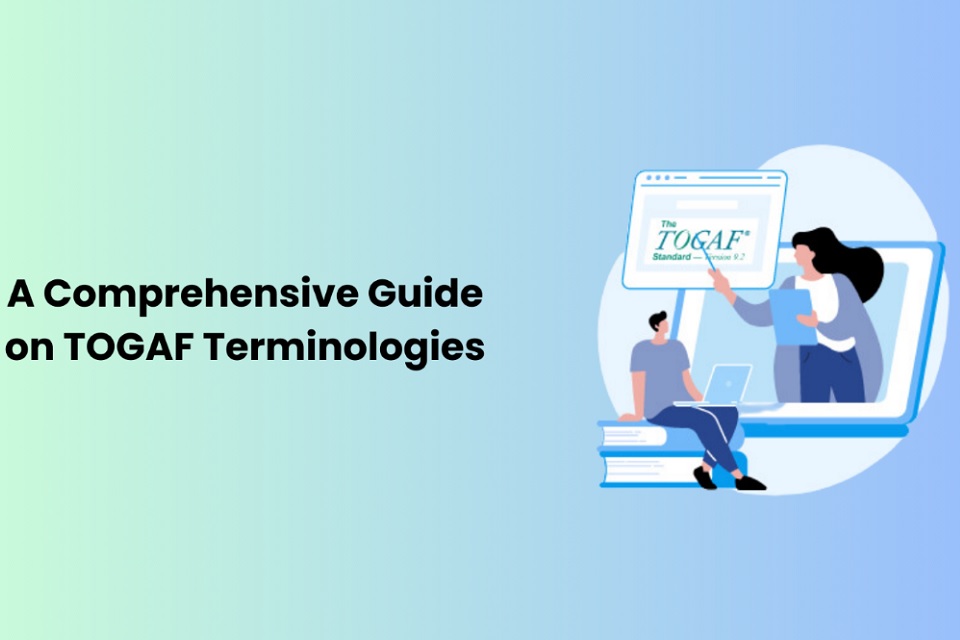Understanding the complex world of TOGAF terminology is crucial if you want to learn enterprise architecture. A firm understanding of TOGAF terminology is equivalent to having a trustworthy compass leading you through the challenging business and technology integration environment as you explore the enterprise architecture field. This thorough guide will be your go-to resource whether you are considering taking a TOGAF Course or just interested in acronyms. In this blog, we will sort through the convoluted web of TOGAF Terminology and highlight the crucial ideas, structures, and procedures that serve as the cornerstone of this important field.
List Of TOGAF Terminologies
Here are some of the major TOGAF terminologies that you must be aware of.
Architecture Development Method (ADM)
TOGAF’s primary framework is the Architecture Development Method. The creation, improvement, and administration of corporate architectures are guided by a step-by-step method for architects. Imagine it as the systematic process architects use to create and implement reliable architectural solutions.
Architecture Repository
Imagine a repository of architectural artefacts, models, and components that architects may use as a resource during the design and implementation phases. That is the Architecture Repository, a vast collection of assets that expedites and assures consistency in the architectural process.
Enterprise Architecture (EA)
At the core of the TOGAF framework is the idea of enterprise architecture, which includes the design and development of an organisation’s processes, systems, and technological infrastructure. It offers a comprehensive perspective of how business and IT components work together and interact inside a company to accomplish strategic goals.
Stakeholder
Collaboration and effective communication are essential for successful corporate architecture. Stakeholders are people or organisations with a personal stake in the result of the design. Understanding the requirements and expectations of stakeholders requires identifying and involving them early on.
Business Architecture
The core subjects of business architecture include corporate strategy, structure, methods, and objectives. It ensures that the architecture aligns with the organisation’s overall business goals and encourages the seamless integration of business and technology.
Architecture Building Blocks
When discussing architectural building blocks, consider the essential aspects of architecture. They might include procedures, information, technology, and other elements. These components are the construction bricks architects utilise to form the architectural landscape.
Architecture Vision
Before starting any architectural project, it is critical to have a clear vision. The Architecture Vision specifies the ideal future state for the organisation’s architecture, ensuring that every architectural choice is a step in the right direction and that the architecture aligns with business goals.
Gap Analysis
Recognising gaps between current and desired states is critical in the ever-changing worlds of technology and business. Gap analysis allows architects to generate strategies to bridge such gaps and attain the desired state by identifying weaknesses in the present architectural design.
TOGAF Certification
Obtaining a TOGAF certification may alter everything for aspiring architects. Your capacity to meaningfully contribute to architectural projects is demonstrated by your TOGAF Certification, which attests to your understanding of and proficiency with TOGAF vocabulary and ideas.
Technology Architecture
As technology develops, businesses must have a clear strategy for managing their IT infrastructure. Technology architecture focuses on the tools, frameworks, and standards business architecture requires.
Architecture Governance
Architecture governance defines the guidelines, regulations, and processes that direct architectural decisions and guarantee compliance to preserve consistency and alignment. It is the system that guarantees the architecture maintains its direction throughout its lifespan.
Conclusion
Finding through the complex TOGAF terms is like learning a new language that makes corporate architectural communication more efficient. This guide has outlined the essential ideas supporting this important discipline, whether you are considering enrolling in a TOGAF course or just looking for a deeper grasp of TOGAF terminology. Armed with this information, you will be better prepared to navigate the enterprise architectural maze as you continue your trip and to help your company achieve its strategic goals.








No Comments